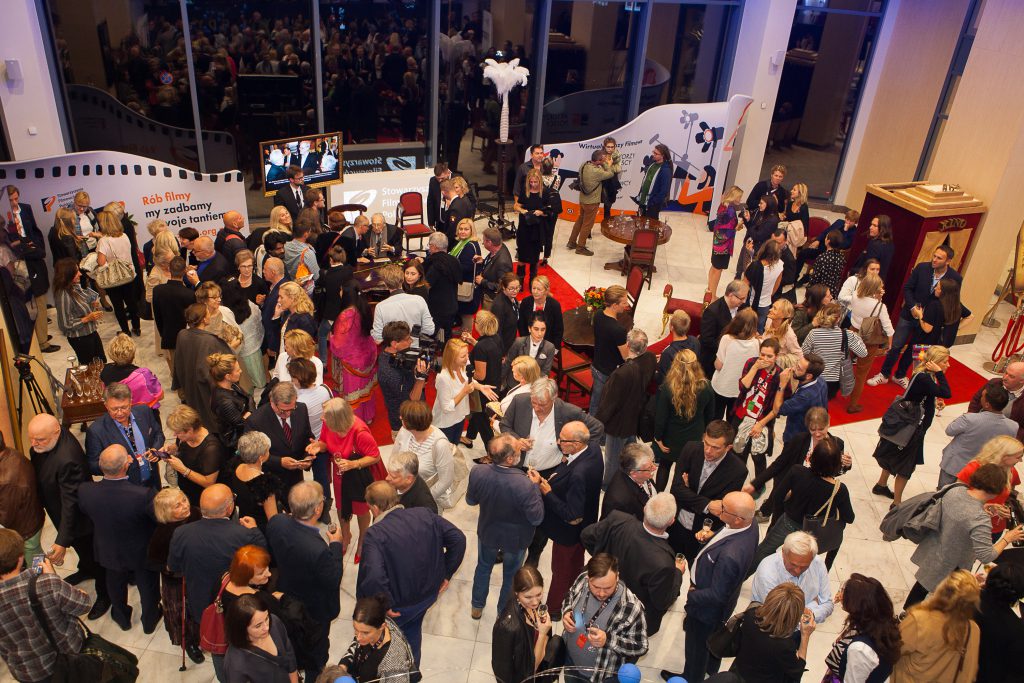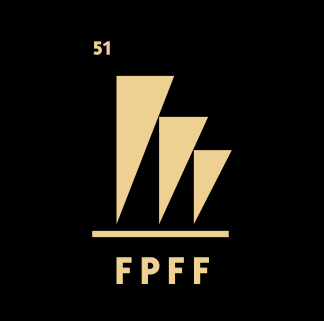GDYNIA INDUSTRY

Po raz drugi gdyński Festiwal będzie okazją do spotkań branży filmowej, wymiany doświadczeń oraz poruszenia ważnych tematów związanych z polskim kinem. Panele dyskusyjne w ramach GDYNIA INDUSTRY są przeznaczone dla twórców, producentów, profesjonalistów branży filmowej oraz studentów szkół filmowych. Zaplanowano dyskusje o sytuacji scenarzystów w Europie, dystrybucji internetowej, źródłach finansowania filmów, kinie dla dzieci, klastrach filmowych oraz filmach historycznych. Spotkania odbędą się w Sali Kameralnej Teatru Muzycznego (wejście od ulicy Danuty Baduszkowej).
PROGRAM GDYNIA INDUSTRY
Środa, 20 września
12.30-14.30, Kino dla młodego widza
17.30-19.30, Ktoś to napisał! – spotkanie z członkami Zarządu Federacji Scenarzystów Europejskich
Czwartek, 21 września
11.00-12.30, Wielkość ekranu, czyli kino w czasach dystrybucji on-line
13.00-14.30, Promocja polskiego filmu za granicą
15.30-17.00, Pozyskiwanie finansowania filmowego. Utarte ścieżki oraz niezbadane lądy
17:30-19:00, Seriale premium – dlaczego warto inwestować w produkcję seriali wysokiej jakości?
Piątek, 22 września
11.00-12.30, Nic się nie dzieje proszę pana. Nic? Rynek polskiej animacji
13.00-14.30, Development filmu historycznego. Muzeum Powstania Warszawskiego przedstawia projekt filmu o Janie Nowaku Jeziorańskim
17.00-18.30, „Panoptikum”. O ekonomii kina, klastrach, festiwalach
OPIS SPOTKAŃ
Panel: Kino dla młodego widza
Kino dla młodego widza i widowni familijnej staje się coraz ważniejszą częścią przemysłu kinematograficznego w Polsce. Wciąż jednak wydaje się być wyzwaniem stworzenie filmu nie tylko rozrywkowego, ale przede wszystkim mądrego, poruszającego i będącego impulsem do ciekawych dyskusji międzypokoleniowych. Panel „Kino dla młodego widza” ma być przestrzenią dla scenarzystów i reżyserów, producentów i dystrybutorów, którzy takie właśnie filmy chcą tworzyć. Paneliści porozmawiają o możliwościach finansowania kina dla młodego widza, wyzwaniach dotyczących form promocji i dystrybucji, a także o tym jakie tematy warto poruszać, aby kino dla dzieci było wartościowe i ambitne, ale nie straciło młodzieńczego ducha.
Uczestnicy: Magdalena Sroka, Jerzy Moszkowicz, Maciej Jakubczyk, Anna Stadnik
Ktoś to napisał! Spotkanie z członkami Zarządu Federacji Scenarzystów Europejskich
Spotkanie i dyskusja ze scenarzystami z sześciu krajów europejskich, członkami Zarządu Federacji Scenarzystów Europejskich, dotyczące aktualnej sytuacji zawodu scenarzysty w Europie i działań w obronie moralnych i materialnych praw scenarzystów jako współtwórców dzieła filmowego. Zaprezentowane zostaną także najnowsze propozycje Komisji Europejskiej, dotyczące prawa autorskiego i praw pokrewnych, dotyczących scenarzystów.
Uczestnicy: Robert Taylor (przewodniczący FSE), Carolin Otto (wiceprzewodnicząca FSE), Monica Boracco, Marie Roussin, Maciej Karpiński, David Kavanagh, Amelie Clement
Dyskusja: Wielkość ekranu, czyli kino w czasach dystrybucji on-line
Impulsem do zorganizowania panelu podczas 42. Festiwalu Polskich Filmów Fabularnych w Gdyni są wydarzenia z tegorocznego festiwalu w Cannes. Jednym z gorętszych tematów był Netflix i jego debiut na imprezie. Niekoniecznie z uwagi na samą jakość prezentowanych na festiwalowej selekcji filmów, co raczej na sam fakt bytności na tej imprezie tego giganta rynku VoD.
Nie możemy udawać, że technologia się nie rozwija, jednak rynek wciąż wydaje się nie być gotowy na zmiany, co potwierdzają słowa przewodniczącego jury Pedro Almodovara: Platformy cyfrowe to nowy sposób dystrybucji obrazów, który w swojej idei jest szlachetny i pozytywny. Jednak nie powinny one nigdy zastępować tradycyjnych form zapoznawania się z dziełem filmowym, do jakich należy seans kinowy. W żadnym wypadku nie możemy zmieniać zwyczajów widzów.
Prowadząca spotkanie redaktor naczelna działu Kultura w Onecie, Katarzyna Janowska, zada gościom pytania o kino na żądanie i VoD jako alternatywę dla klasycznej dystrybucji filmów artystycznych i mainstreamowych w mediach cyfrowych.
Debata: Pozyskiwanie finansowania filmowego. Utarte ścieżki oraz niezbadane lądy
Produkcja filmowa to proces wymagający wiele cierpliwości i pracy twórczej. Podstawą jest jednak finansowanie. Polska produkcja opiera się przede wszystkim na pozyskiwaniu funduszy publicznych. Są również inne źródła finansowania filmu, m.in: prywatni inwestorzy, odroczone honoraria (defered payments), lokowanie produktu i sponsoring, czy croudfounding. Wymagają one odmiennego podejścia niż pozyskiwanie środków publicznych. O utartych już ścieżkach, ale i niezbadanych lądach pozyskiwania finansowania filmowego podyskutujemy podczas nieformalnej, angażującej debaty w gronie praktyków. Spotkanie będzie okazją do zderzenia opinii polskich producentów, przedstawicieli instytucji filmowych, prawników oraz przedstawiciela instytucji finansowej.
Goście: Magdalena Sroka, Robert Baliński (PISF). Maciej Kubiak (LSW), Piotr Starak, Krzysztof Terej (Watchout Production), Ewa Puszczyńska (Opus Film), Andrzej Janicki (KIPA), Krzysztof Gawrysiak (Inwestor).
Seriale premium – dlaczego warto inwestować w produkcję seriali wysokiej jakości?
Popularność seriali wzrasta na całym świecie. Nowe pomysły narracyjne, ciekawe, angażujące i zaskakujące opowieści oraz nieszablonowi bohaterowie pojawiają się w produkcjach serialowych znacznie częściej niż w kinie, dlatego widzowie coraz chętniej chcą je oglądać. Seriale są jednym z najskuteczniejszych środków miękkiego oddziaływania i budowy pozycji kraju w obszarze globalnej kultury audiowizualnej, przez co coraz częściej są prezentowane w nowatorski sposób.
Na globalnym rynku seriali trwa rewolucja, często zdominowana przez internetowe platformy subskrypcyjne (Hulu, Netflix, ShowMax, AmazonPrime). Również w Polsce stopniowo zmienia się podejście do seriali i co roku pojawiają się nowe produkcje. Jak wygląda rynek serialowy? W jaki sposób platformy internetowe i kanały premium kształtują nowe trendy? Dlaczego należy rozwijać podejście do seriali, aby zachowywały jakość? Zapraszamy do dyskusji.
Uczestnicy: Jan Pawlicki, Magdalena Łobodzińska (TVP), Dorota Kośmicka-Gacke (DGA Studio), Izabela Łopuch (HBO)
Prowadzenie: prof. Arkadiusz Lewicki
Nic się nie dzieje proszę pana. Nic? – dyskusja o rynku polskiej animacji
Jubileusz 70-lecia polskiej animacji to dobry czas na podsumowanie kierunku, w jakim zmierzał rynek polskiej animacji w ostatnich latach i wspólnego zastanowienia się nad tym co czeka nas w najbliższym czasie. Filmy animowane z jednej strony podlegają tym samym zasadom co inni gracze rynku produkcji medialnych, z drugiej specyfika ich produkcji, dużo większe budżety, wydłużony okres produkcji, trudności z dystrybucją kinową czyni je wytworem stosunkowo trudnym na każdym etapie łańcucha twórca – odbiorca.
Z czym przyjdzie zmierzyć się: instytucjom odpowiedzialnym za finansowanie animacji, producentom, stacjom telewizyjnym, instytucjom branżowym, dystrybutorom animacji. Jak zwiększyć szansę na produkcję filmów długometrażowych, co zrobić z koprodukcjami międzynarodowymi shortów i co zrobić, żeby animacja automatycznie zaliczana przez szeroką publiczność jako przeznaczona dla dzieci, uzyskała należne jej miejsce wśród innych dzieł kinematografii polskiej?
Do rozmowy zaproszono praktyków dziennikarzy, animatorów, producentów, przedstawicieli środowisk filmowych. Stowarzyszenie Producentów Polskiej Animacji chce rozpocząć dyskusję o tym co zrobić, czy polska animacja uzyskała należne jej miejsce, nie za granicą – to już dawno się stało, lecz również na rodzimym rynku produkcji filmowych.
Moderatorka: Aneta Ozorek
Development filmu historycznego
Polacy kochają kino historyczne. Można powiedzieć, że wszyscy jesteśmy dziećmi Hoffmana. Duża część filmów dofinansowanych przez PISF to filmy historyczne. Jednakże w ocenie dyrektora Muzeum Powstania Warszawskiego (również producenta filmowego), największym wyzwaniem pozostaje etap developmentu, rozwoju projektu. Jedna kwestia to prace literackie. Ale dobrze przygotowany projekt musi być także doskonale udokumentowany, wsparty opiniami historyków, skonsultowany. Wielkim wyzwaniem jest pozyskanie budżetu, zwłaszcza poza pieniędzmi publicznymi.
Widzowie 42. FPFF jako pierwsi poznają kulisy przygotowań do realizacji filmu o Janie Nowaku Jeziorańskim, produkowanym przez Muzeum Powstania Warszawskiego i reżyserowanym przez Władysława Pasikowskiego. Jan Ołdakowski i Joanna Lang z MPW zapoznają uczestników z dokumentacją historyczną projektu, zawierającą takie elementy, jak katalog historycznych lokacji, opis i dokumentacja zdjęciowa postaci, czyli wszystko, co składa się na historyczną warstwę filmu. Dyrektor Muzeum Powstania Warszawskiego przybliży widzom Festiwalu drogę od zarysu pomysłu na film do obecnego stanu zaawansowania tego unikatowego projektu filmowego.
Uczestnicy: Anna Wróblewska, Jan Ołdakowski
„Panoptikum”. O ekonomii kina, klastrach, festiwalach
Od początków swojego istnienia kino było silnie uzależnione od wszelkiego rodzaju uwarunkowań ekonomicznych, społecznych i politycznych – skupienie się na tych kwestiach i spojrzenie na film nie jako na autonomiczne dzieło lub tekst kultury, ale jako na produkt powstały w określonych realiach pozwala uzupełnić wnioski płynące z badania za pomocą metod tradycyjnego filmoznawstwa i dotrzeć do faktów, które w innym przypadku mogłyby zostać pominięte.
Numer nomograficzny czasopisma „Panoptikum” EKONOMIA KINA jest zbiorem efektów badań tych aspektów kina, które nierozerwalnie wiążą się z finansami. Jego autorzy skupili się zarówno na kwestiach związanych z produkcją i dystrybucją, jak i tych pozostających niejako obok kina, ale wpływających na jego funkcjonowanie – takich jak marketing, dubbing czy cenzura. Równie ważna jest szeroko pojmowana ekonomia prestiżu, pozytywne opinie wśród krytyków i nagrody na festiwalach, które w świecie kina europejskiego zastępują w wielu przypadkach sukces czysto komercyjny. Z okazji premiery periodyku odbędzie się dyskusja poświęcona klastron filmowym, festiwalom oraz badaniom dotyczącym branży filmowej.
Uczestnicy: Marcin Adamczak, Krzysztof Stachowiak, Grażyna Świętochowska
Prowadzenie: Anna Wróblewska
Organizator GDYNIA INDUSTRY: Festiwal Polskich Filmów Fabularnych
Partnerzy/Współorganizatorzy: Polski Instytut Sztuki FIlmowej, Stowarzyszenie Producentów Polskiej Animacji, Panoptikum, Onet.pl, Muzeum Powstania Warszawskiego, Stowarzyszenie Producentów Polskiej Animacji, Kancelaria LSW Leśnodorski Ślusarek i Wspólnicy

